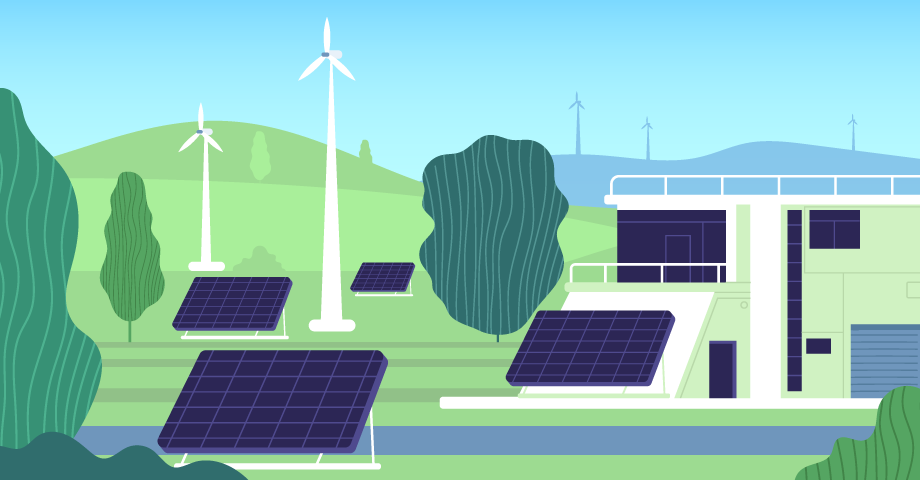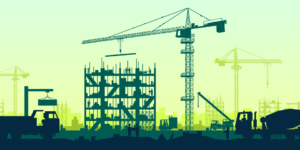Extreme weather is increasing in frequency and severity as the impact of climate change becomes more apparent. Natural disasters and severe weather events will have an economic impact across industries, and commercial real estate development is no exception. Looking toward the future, your firm should prioritize climate resiliency, whether that means disaster-proofing existing properties or opting for sustainable features in new projects. Ensuring climate resiliency will have numerous benefits for your team, from bolstering your firm’s reputation in the community to aligning your firm with shifting government regulations and an increasingly eco-conscious investment environment.
Here’s how you can adapt your development strategy to account for severe weather changes and future-proof your portfolio amid climate change:
Why Adapting to Severe Weather Matters in Real Estate Development
The National Oceanic and Atmospheric Administration (NOAA) documented 28 billion-dollar extreme weather events in the United States in 2023, the highest number recorded since documentation began in 1980. Buildings located in the path of climate change-related severe weather events, such as tornadoes, floods, and hurricanes, will face high costs related to rebuilding and repairing damaged infrastructure. Insurance costs will also put pressure on owners as disasters compound – the Federal Emergency Management Agency (FEMA) reported a 31% year-over-year increase in insurance costs on commercial buildings located in states with the 10 highest annual loss totals related to natural hazards.
The financial implications are reason alone to prioritize weather resiliency in your portfolio planning, but prioritizing a sustainable approach in your development process will also give you an advantage in a rapidly shifting regulatory environment. The Federal Government is currently implementing sustainability-focused legislation to require owners to electrify systems, decrease energy use, reduce water consumption, and cut waste across new building construction, major renovations, or existing properties. The Climate Smart Buildings initiative hopes to reach net-zero building emissions by 2045 and includes a 50% reduction by 2032. Opting for sustainable buildings, and committing to climate-resilient upgrades on old properties, ensures your portfolio complies with a regulatory environment moving toward carbon neutrality.
Investors and tenants are also looking to prioritize green in the lending and rental process, allowing for even more longevity in your portfolio. Sustainable properties are attractive to lenders for a variety of reasons, including long-term cost savings from energy-efficient features and higher rental rates from property values. Tenants have shown a strong desire to live in sustainable properties and may pay more to do so – a recent survey found 61% of renters reported a willingness to pay more to live in an environmentally friendly building.
Sustainable Designs and Technologies for Climate Resilient Infrastructure
Sustainable design and technology can be implemented as early as pre-development and play a major role in disaster-proofing buildings. Incorporating the features outlined below will decrease your project’s environmental impact and make your property more resilient to severe weather events.
Green Building Materials
Green building materials have the dual benefit of lowering carbon emissions, as well as the landfill waste produced by a project while offering more integrity and longevity than other construction materials. Old standards are increasingly being replaced by sustainable alternatives. For example, many developers opt to use ferrock instead of concrete, a recycled substitute made by combining steel dust and silica. Ferrock, in addition to being made from recycled materials, is also five times stronger and more flexible than Portland cement.
Innovative new materials being incorporated into the construction process are often both more environmentally friendly and structurally sound. Hempcrete, an alternative to vinyl siding, is resistant to fire and mold, is biodegradable, and can help modulate indoor temperatures, making buildings easier to heat and cool. Mycelium, a material made by drying out underground fungal roots, can be used for load-bearing structures and is mold, water, and fire-resistant.
Energy Efficiency
Renewable energy has been a hot topic in recent years, with many projects aiming to achieve net zero building status. You have many options when it comes to sustainable energy, with wind, solar, and hydropower or geothermal wells. By integrating multiple sustainable energy sources, several high-profile development projects have been able to achieve net zero status, where buildings are free of on-site emissions or energy use and are powered purely by clean energy. For example, The Bullitt Center in Seattle, Washington, a major commercial office space, produces 30% more energy than the building requires to run.
Passive + Disaster Resilient Design
Disaster resilience can also be prioritized in building design, taking into consideration the weather events each region is prone to. Many buildings are being built with a “passive design” to stay cool and hot without using excessive energy. Passive buildings maximize natural ventilation to keep cool and are made with materials able to absorb and store heat to maintain comfortable indoor temperatures. Resilient buildings can also be constructed with a region’s specific weather in mind. For example, in earthquake-prone areas, you can incorporate seismic resilient elements that reduce damage or incorporate flood barriers, permeable pavement, and green roof features in areas with severe storms.
Benefits of Climate Change Resilient Infrastructure
Prioritizing climate-resilient infrastructure will have numerous short-term and long-term benefits for your portfolio. Here are a few reasons why you should consider prioritizing real estate for climate resilience as severe weather continues to wreak havoc on existing properties:
Risk Mitigation
Prioritizing storm and severe weather resiliency in the construction process can ultimately mitigate the risk of unexpected and costly repairs on your properties. Lowering the chance of damage will keep your operating costs down and result in significant long-term savings, even if the durable sustainable materials come with higher upfront costs. Ensuring your properties can withstand weather conditions and mitigating the risk of infrastructure damage will also help you keep insurance premiums down.
ESG Goals + Social Responsibility
Building green also minimizes contribution to climate change and allows you to make a positive contribution to public health in the form of safe, sustainable spaces. Developers who commit to eco-friendly and low-carbon projects will be able to more comfortably meet Environmental, Social, and Governance (ESG) goals aimed at creating ethical and sustainable businesses. Sustainable properties often feature community-oriented spaces, such as public green spaces or parks, and can bolster your firm’s reputation as a positive social force.
Tax Incentives + Funding Opportunities
Developers willing to commit to sustainable or green construction will have access to funds from private and public financing and can use these programs to round out a complex capital stack. Green loan products are on the rise as investors look to put funds toward sustainable projects. For example, Fannie Mae and Freddie Mac offer a pricing incentive to multifamily developers with projects receiving a green building certification. Under the program, developers get lower interest rates, higher loan proceeds, and reduced DSCR.
Public and government funded green building tax incentives and rebates are also an option for your team. Commercial Property Assessed Clean Energy (C PACE) is another option for developers looking to take advantage of government funding for sustainable properties. C Pace is a state policy-enabled financing program designed to help owners and developers access the necessary capital for sustainable construction or make energy-efficient and sustainable upgrades to existing buildings. Features designed to help buildings adapt to severe weather are eligible for C Pace funds, making the program a great option for developers looking to adapt to climate-related weather changes.
Technology’s Role in Sustainable Development
Modern real estate development software can play a key role in bringing your sustainable projects in on time and on budget. By leveraging development software, your team can proactively manage projects with ease, from planning through stabilization. You can use technology to assemble accurate budget forecasts with benchmarked portfolio data before breaking ground and to manage capital over the course of the project lifecycle, including contingencies, draws, schedules, and vendors with proactive alerts that save you from costly errors.
Northspyre’s Complex Capital Management capability can be a game-changer on sustainable projects leveraging alternative sources of capital. Northspyre is the only CRE development platform with a tailored solution that mitigates risk and enables a seamless end-to-end development lifecycle on projects with complicated source structures and requirements. You can enable consistency and improve profit margins on projects with complex capital stacks with complete visibility, predictive intelligence, and actionable insights that keep your team agile and in control at every stage of a project’s life cycle.
Download our guide “How to Cut Real Estate Development Costs by 2-6%” to learn more about how you can transform your project delivery process and keep costs down at every stage of the development process.



